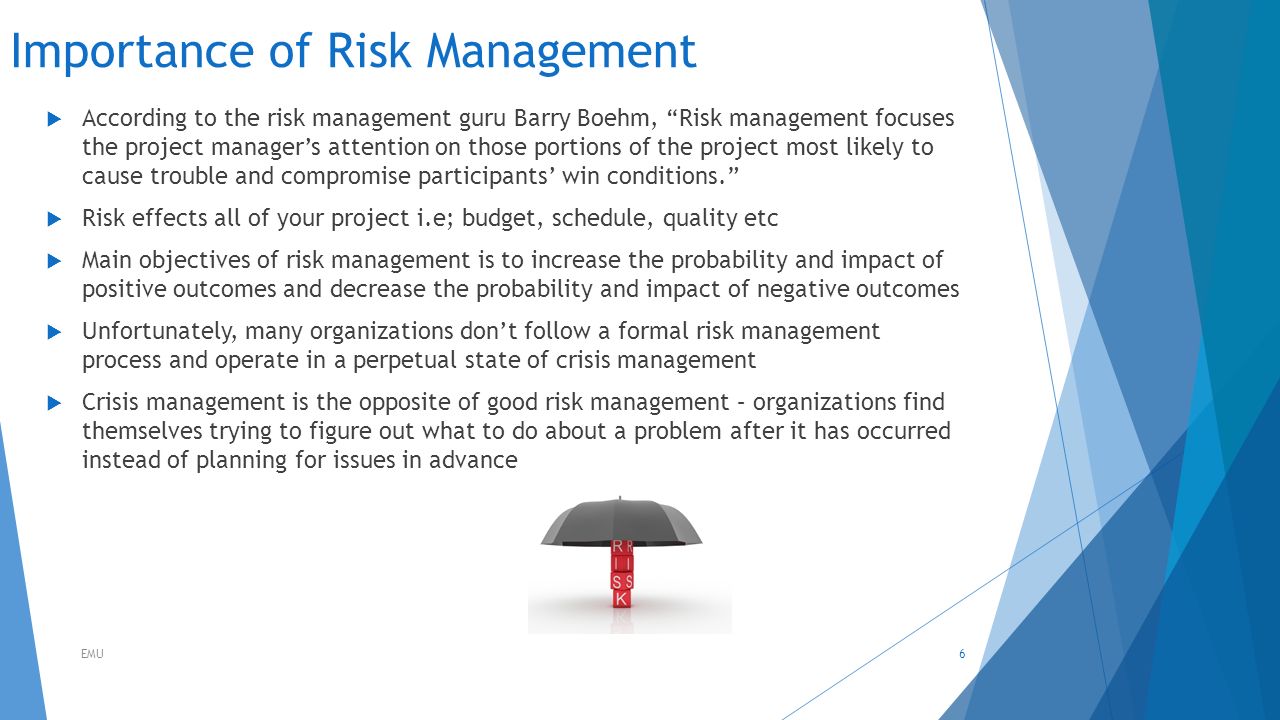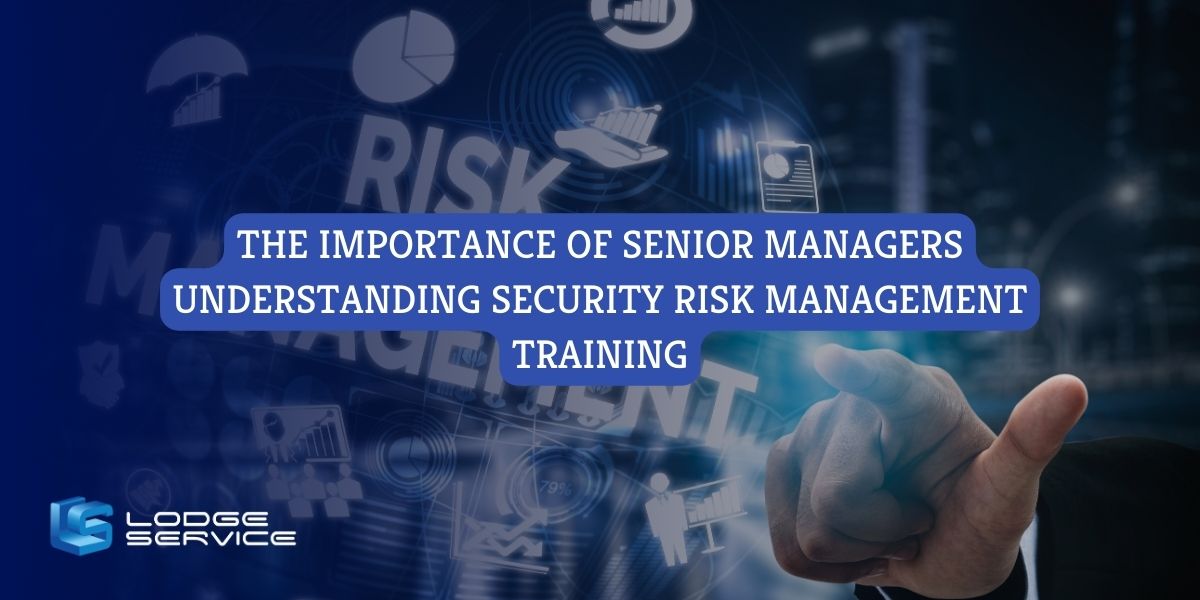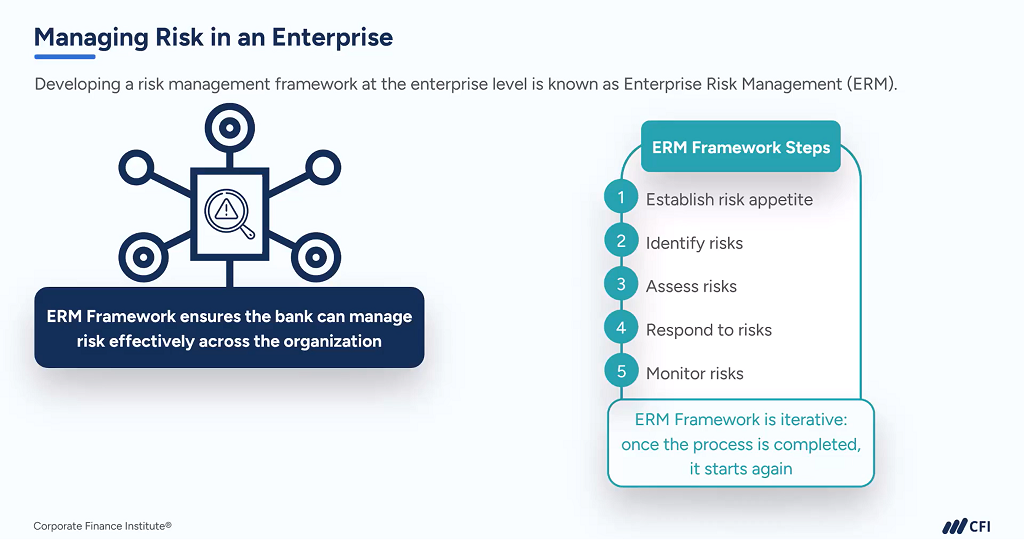The Extensive Importance of Risk Management in Global Supply Chains
The Extensive Importance of Risk Management in Global Supply Chains
Blog Article
Checking out the Significance of Risk Management for Effective Decision-Making Strategies
In the intricate globe of company, Risk Management arises as a vital factor in the decision-making process. The capacity to determine potential risks and possibilities, and strategize appropriately, can spell the distinction in between success and failure.
Understanding the Idea of Risk Management
Risk Management, an essential component in decision-making, is usually misinterpreted or oversimplified. Normally, it describes the recognition, analysis, and prioritization of risks to minimize, keep track of, and manage the likelihood or influence of unfavorable occasions. However, it's not merely about stopping unfavorable results, however likewise regarding recognizing prospective chances. Risk Management includes structured and regimented strategies, making use of information and insightful assessments. It calls for a thorough understanding of the organization's context, objectives, and the potential risks that could combat them. From monetary uncertainties, legal responsibilities, calculated Management errors, to accidents and natural calamities, it resolves different dangers. Importantly, effective Risk Management is not stationary; it's a continual, positive procedure that develops with changing circumstances.
The Role of Risk Management in Decision-Making Processes
In the realm of calculated preparation and business operations, Risk Management plays an essential function in decision-making procedures. Risk Management thus ends up being an essential tool in decision-making, helping leaders to make educated choices based on a thorough understanding of the dangers involved. Risk Management offers as an essential element in the decision-making processes of any company.

Just How Risk Management Improves Strategic Planning
In the context of strategic planning, Risk Management plays an essential function. Starting with the recognition of possible threats, it better includes the execution of Risk reduction procedures. The function of Risk Management is dynamic but not fixed, as it requires constant monitoring and adjusting of approaches.
Determining Potential Threats

Executing Risk Mitigation
Having actually established the importance of determining possible threats, the next step is to explore Risk mitigation. This procedure involves establishing and applying techniques to take care of recognized risks successfully. It is a critical element of tactical planning as it enhances decision-making by minimizing potential adverse end results. Risk mitigation techniques can range from Risk evasion, Risk transfer, to risk decrease. Each approach needs to be customized to the particular Risk, considering its potential influence and the company's Risk tolerance. Reliable Risk mitigation requires a deep understanding of the Risk landscape and the potential impact of each Risk. This understanding allows companies to prioritize risks and allocate sources properly, guaranteeing that the most significant risks are attended to initially.
Tracking and Adjusting Methods
Though Risk mitigation is an essential step in tactical planning, constant tracking visit here and modification of these techniques is equally essential. It additionally supplies a chance to assess the success of the Risk Management steps, allowing changes to be made where essential, further enhancing strategic preparation. Surveillance and readjusting Risk Management strategies is a critical component for boosting a company's resilience and strategic preparation.
Case Studies: Successful Risk Management and Decision-Making
Worldwide of organization and money, effective Risk Management and decision-making often work as the columns of thriving business. One such entity is a multinational oil company that minimized economic loss by hedging against varying oil costs. In another circumstances, a technology start-up flourished by identifying and approving risky, high-reward strategies in a volatile market. A worldwide financial institution, faced with regulatory unpredictabilities, effectively navigated the scenario with proactive Risk evaluation and dynamic decision-making. These situations highlight the value of astute Risk Management in decision-making procedures. It is not the lack of Risk, however the Management of it, that frequently differentiates effective business from unsuccessful ones. These instances highlight the essential role of Risk Management in tactical decision-making. importance of risk management.
Tools and Methods for Effective Risk Management
Browsing the elaborate puzzle of Risk Management needs the best collection of techniques and tools. These devices, such as Risk registers and warm maps, help in identifying and analyzing potential dangers. Strategies include both quantitative approaches, like level of sensitivity analysis, and qualitative approaches, such as SWOT analysis. These aid in focusing on risks based upon their possible impact and likelihood. Risk response strategies, a vital component of Risk Management, entail approving, my review here preventing, moving, or mitigating threats. Surveillance and regulating risks, through routine audits and reviews, make sure that the approaches continue to be reliable. With these tools and techniques, decision-makers can navigate the facility landscape of Risk Management, best site thus promoting educated and reliable decision-making.
Future Patterns in Risk Management and Decision-Making Strategies
As we discover the large landscape of Risk Management, it ends up being obvious that the tools and methods utilized today will certainly continue to advance. The principle of Risk culture, where every participant of a company is conscious and involved in Risk Management, will certainly gain a lot more prominence. These patterns herald an even more inclusive and aggressive method towards Risk Management and decision-making.
Final thought

Risk Management thus becomes an essential device in decision-making, assisting leaders to make informed selections based on a thorough understanding of the dangers involved. Risk reduction techniques can range from Risk evasion, Risk transfer, to risk decrease (importance of risk management). Efficient Risk reduction requires a deep understanding of the Risk landscape and the prospective impact of each Risk. Risk response approaches, a crucial element of Risk Management, include accepting, avoiding, moving, or mitigating dangers. The idea of Risk society, where every member of an organization is aware and entailed in Risk Management, will acquire more prestige
Report this page